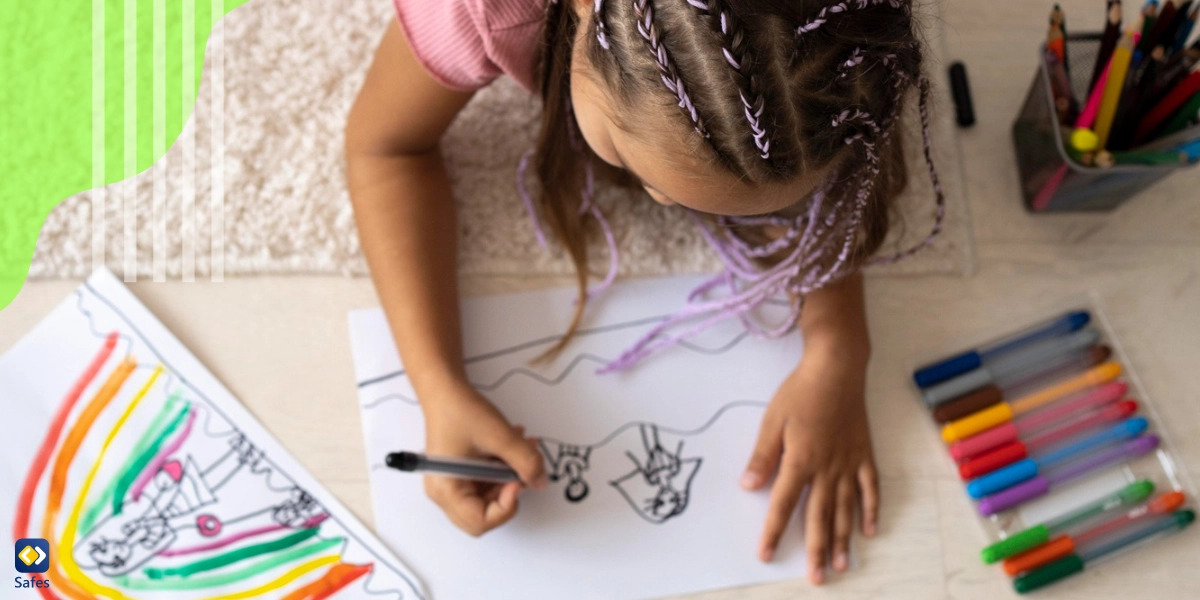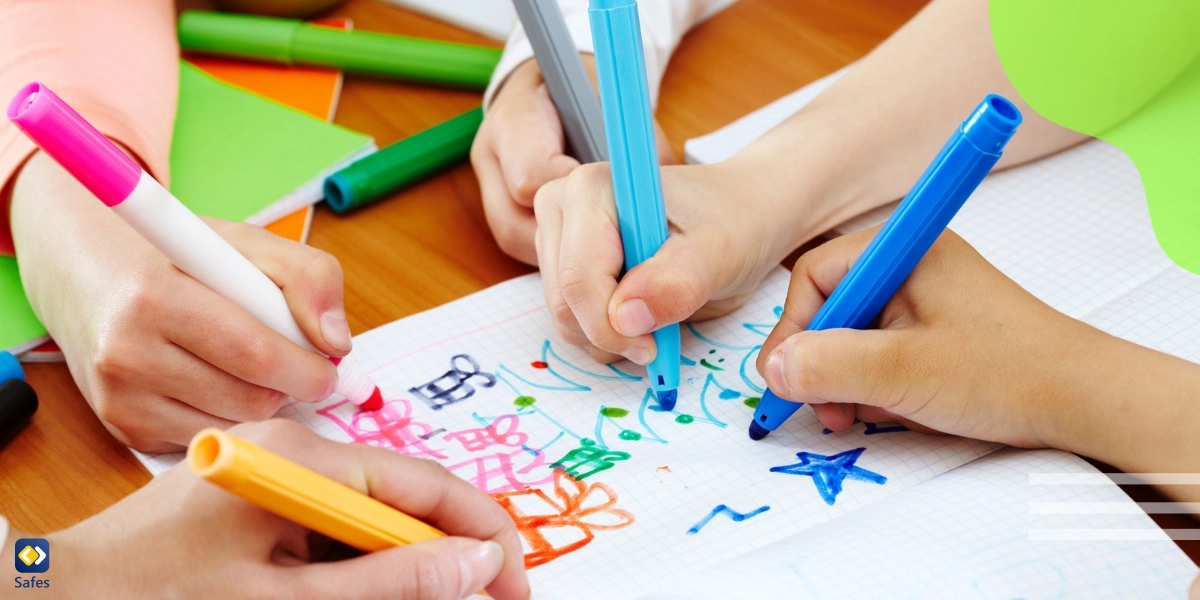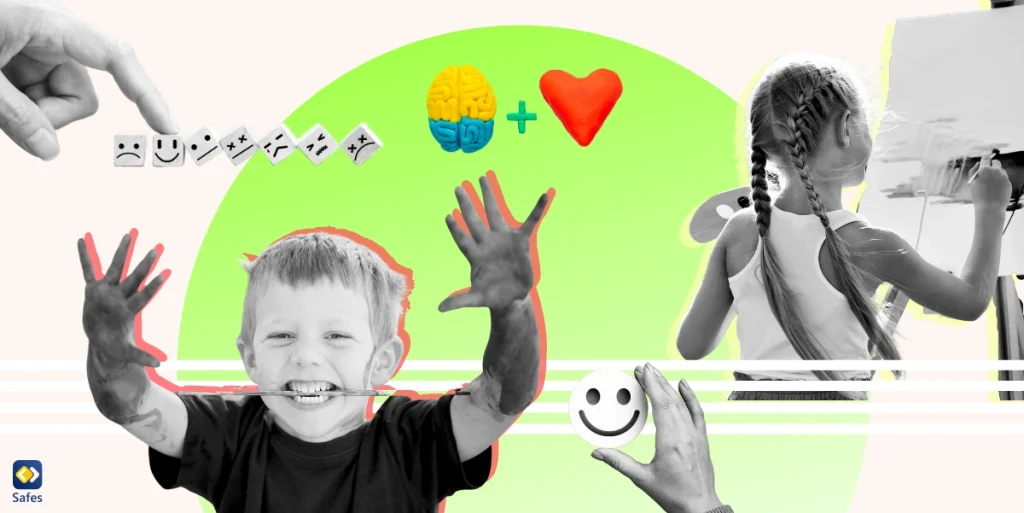Art has historically played a crucial role in human expression and society. While we frequently emphasize the value of math and science in the classroom, we must equally acknowledge the importance of art in a child’s development. Beyond academic accomplishment, art fosters, among other things, emotional intelligence, creativity, and critical thinking. In this blog post, we’ll explore the various answers to this question: Why is art important for kids?
Download and Start Your Free Trial of the Safes Parental Control App
-
Art Enhances Creativity and Imagination
Among the benefits of art for kids is that it encourages children to think outside the box. According to research, art is important for child development. When children are given the freedom to make art, they are able to tap into their inner creativity and imagination. Whether it’s sculpting, painting, or drawing, art enables people to experiment with new ideas and materials. In addition to improving their artistic skills, this creative freedom also affects other areas of their lives, enabling them to approach problem-solving with an open mind.
Also, art gives children a safe outlet for expressing emotions that they might find challenging to express verbally by helping them visualize their thoughts and feelings. This emotional discharge can be therapeutic and help kids become more conscious of their own and other people’s feelings.

-
Art Promotes Critical Thinking and Problem Solving
Creating art involves a series of decisions and problem-solving which are among the developmental benefits of art. To properly communicate their concepts, children must use colors, shapes, and materials, basically use their spatial intellligence. Also, students learn how to modify and adapt their innovations when faced with challenges or unanticipated outcomes. These activities teach children the value of perseverance and adaptation while also assisting them in the development of critical thinking abilities.
Moreover, art encourages focus and observation. Children’s observational abilities improve when they draw or paint a subject and are forced to carefully consider its features and proportions. These skills may be applied in other professions, including science, where precise observation is necessary. These same skills help with digital literacy and other things children need to learn as soon as possible.
-
Art Fosters Communication Skills
Art is a universal language that goes beyond words. With their art, children may communicate their ideas, narratives, and experiences to others. Children who struggle with language development or who have communication issues might benefit most from this sort of nonverbal communication. People may express themselves via art and engage with others in new ways. As drawing and painting are universal languages, they are crucial to children’s growth.
Also, cooperative crafts and group art activities help kids learn social skills like empathy, sharing, and cooperation. These skills are beneficial in other areas of life as well as in school as they develop and interact with others.

-
Art Encourages Cultural and Historical Awareness
Another benefit of art is that it exposes children to different cultures, historical periods, and artistic styles. It broadens their horizons, teaching children to value variety and comprehend the world from many points of view. Children can acquire empathy and cultural knowledge by making art influenced by diverse cultures or historical events.
Art also helps youngsters to connect with their own cultural history by visually representing customs and tales. This connection to their roots might help them feel more confident in their identity and feeling of belonging.
How Can Parental Controls Help with Art Education?
Parental controls can play a beneficial role in art education by providing a safe and structured environment for children to explore and learn about art. Here’s how using parental controls can aid in art education:
Filter Age-Appropriate Content
Parental control software can filter and restrict improper or mature art content that may not be acceptable for the age or maturity level of a kid. This guarantees that children are exposed to instructional and age-appropriate art, lowering the possibility of them coming across improper or graphic content that is not acceptable for their age group.
Supervise Online Art Resources
There are several art education tools available online, ranging from instructional videos to virtual art museums and galleries. Parental controls enable parents to monitor and direct their child’s online art discovery, ensuring that they have access to high-quality, instructive information. During approved art study hours, parents can also ban or limit access to distracting websites or applications.
Set Time Limits
Art education frequently incorporates both offline and online activities. Parental controls can assist parents in setting screen time limitations, ensuring that youngsters balance digital art discovery with other kinds of creative expression, such as sketching, painting, or sculpting offline.
You can use the default parental controls on your child’s device such as Windows parental controls, or you can opt to use a third-party app like Safes. The difference is in the number of features that Safes provides which are greater than default parental controls. Safes is available on multiple platforms including iOS and Android. Try it now with a free trial to experience advanced features for protecting your child.
Conclusion
Although math and science are undeniably crucial subjects in school, it’s equally crucial to recognize the significance of art in a child’s growth. A well-rounded education and personal development depend on creativity, critical thinking, communication, and cultural knowledge, all of which are fostered through the arts. We must make sure that art, like math and science, remains a crucial component of a child’s educational route in order to completely support their development.
Your Child’s Online Safety Starts Here
Every parent today needs a solution to manage screen time and keep their child safe online.
Without the right tools, digital risks and excessive screen time can impact children's well-being. Safes helps parents set healthy boundaries, monitor activity, and protect kids from online dangers—all with an easy-to-use app.
Take control of your child’s digital world. Learn more about Safes or download the app to start your free trial today!




